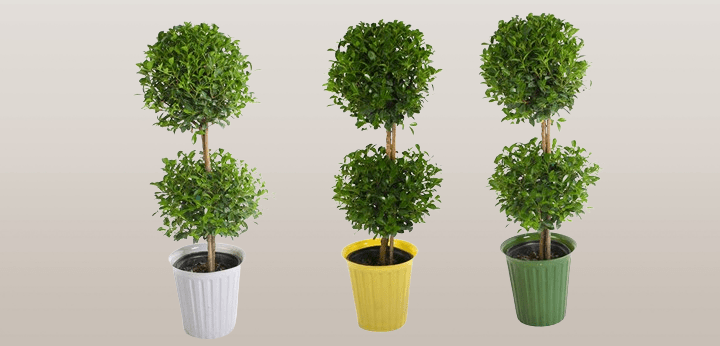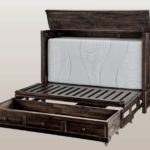Contents
Introduction to Eugenia Topiary
We are delighted to have you visit the magical world of Eugenia Topiary. Imagine strolling through a park where the bushes and shrubs have been painstakingly sculpted into intriguing shapes; it will feel as though you have entered an art gallery. These magnificent plant artworks bring peace, grace, and beauty into any setting.
To discover more about the fascinating history of topiary art, the many benefits of including Eugenia topiaries in your landscape, the specifics of creating and maintaining these living sculptures, and some inventive methods to bring them outside, please keep reading. Set out on an adventure where uniqueness, charm, and classic beauty will rule supremely!
History of Topiary Art
Numerous centuries have seen the emergence of multiple topiary styles. It all started in ancient Rome when gardeners utilized chopped hedges and bushes to make complex designs. Intricate geometric patterns and animal sculptures were created by the Romans from plants.
Paintings of topiary flourishes were trendy throughout the Renaissance. The innovative and technically proficient tree and hedge designs brought Italian landscape architects worldwide fame. Topiaries throughout Europe were decorated with heraldic emblems, prominent individuals from Greek mythology, and legendary monsters.
During the 17th century, when the English Renaissance was at its peak, formal gardens like Versailles Palace were constructed, and topiary art thrived. Glorious geometric arrangements of evergreen bushes adorned these lavish settings.
Realistic styles began to emerge in topiary art over time. The discovery that living organisms might be utilized to build vast ecosystems provided new opportunities for personal expression. Natural plants, animals, and birds were included.
Ordinary gardens can become unique works of art thanks to the ageless beauty of topiaries. From small garden accents to expansive installations in parks and botanical gardens, these artistic creations may be found in our outdoor spaces in various ways.
Time has demonstrated that the evolution of topiary art reflects human creativity and our desire to mold our surroundings to fit our preferences. Whether you choose realistic or classic symmetrical patterns, eugenia topiaries are essential to every landscape.
Benefits of Eugenia Topiaries in Gardens
- Eugenia topiaries are a beautiful and functional accent to any outdoor area. These living treasures’ aesthetic value, practicality, and inherent beauty dramatically enhance any patio or garden.
- Eugenia topiaries are primarily utilized as a natural screen and a means of obtaining privacy. Their well-manicured forms and dense foliage make for an impressive garden screen. Eugenia’s topiaries will create the ideal atmosphere for your leisure, whether you choose to relax in the tranquility of your backyard or the bustle of the city.
- These houseplants have two functions: they improve air quality and create more seclusion. Eugenia topiaries absorb carbon dioxide and expel oxygen into the atmosphere through photosynthesis. Now that the building has better, higher-quality surroundings with more excellent air quality, everyone may live there.
- Eugenia topiaries can also be used to create garden highlights. Their sculptures are captivating and one-of-a-kind, perfect for any size garden. These sumptuous art pieces can be carefully placed to draw attention to specific details and give your outdoor space harmony and structure.
- Eugenia topiaries also have the benefit of requiring less upkeep than other landscaping choices. With regular pruning and watering, these plants may take care of themselves for many years.
- When creating a landscape, Eugenia’s topiaries let your creativity run wild. There are countless options, from simple geometric forms like spheres or cones to complex designs inspired by animals or other natural phenomena. By embracing your individuality, you may express your style and elevate the standard of visual excellence.
- Eugenia crafts exquisite and functional topiaries. The ability to express oneself artistically, air filtration, solitude, and low maintenance costs are additional valuable benefits.
How to Create and Maintain a Eugenia Topiary
Sometimes, people misread eugenia topiaries because they believe they are simple to cultivate and care for. A little imagination and knowledge of fundamental gardening techniques may turn your yard into a work of art.
Select a vigorous, healthy eugenia plant that doesn’t mind growing tall. This is what your topiary sculpture will be built upon. Choosing a shape or pattern for your topiary is the final stage. It could be imagined animals or artistic renditions of geometric patterns.
As soon as you decide, it would help if you cleared any extra branches or leaves from the area surrounding the building. Sharpen your pruning shears for the most accurate cuts and the quickest time for plants to recuperate.
Eugenia needs to be often pruned as it grows using hand pruners or hedge shears. In addition to promoting the growth of lush foliage, this will aid in form maintenance.
Along with frequent pruning, the topiary needs regular watering and fertilization. Between sessions, give the soil a thorough but gentle irrigation to allow it to dry out. Fertilize your topiary per the product’s instructions to guarantee long-lasting health and color. Use a well-balanced mixture.
Ensure your topiary eugenia is pest-free and healthy before bringing it indoors. If you observe any damage or discoloration, take the appropriate action with the leaves.
If you attempt to take regular care of Eugenia’s topiary and adhere to these straightforward guidelines, your yard will always be stunning. Use your creativity to incorporate natural aspects into your paintings in light of this.
Creative Ideas for Incorporating Eugenia Topiaries in Landscapes
- Eugenia topiaries can be grown in a garden in a nearly infinite variety of ways. Predicting the grace, charm, and oddball happiness these living works of art could add to your outdoor space is difficult. These creative techniques will help you include eugenia topiaries in your landscape design:
- Using taller Eugenia plants in topiaries is one way to draw attention to particular areas of your environment. If you want to improve your house’s curb appeal, they will look fantastic in the garden or at the front door.
- Highlight Pathways: Eugenia miniature topiaries can act as a garden’s structural element and a guide for visitors. Their finely sculpted statues will elevate the ambiance.
- Lastly, to accentuate architectural features, surround the windows, arches, and entrances you want to draw attention to with more small Eugenia topiaries.
- To showcase the area’s natural beauty, cultivate beautiful miniature topiaries of Eugenia in striking pots and place them on patios, balconies, and decks.
- Terrace gardens may turn rooftops into secret urban retreats that blend in perfectly with their urban surroundings by using enormous topiary sculptures of Eugenia.
- Eugenia topiaries are versatile enough to be used in themed gardens. Go for geometric or animal print designs for a bright, contemporary look. Let your creativity run wild!
- After you view these samples, picture all the imaginative ways you could use these magnificent Eugenia topiaries to enhance your environment.
Conclusion: Elevate Your Garden with the Timeless Beauty of Eugenia Topiaries
Plant many Eugenia topiaries to transform your yard into a lush, breathtaking work of art. When thoughtfully organized, these plants would look fabulous in a garden.
The longevity of topiary art demonstrates its enduring appeal. Eugenia’s topiaries, whether bizarre sculptures inspired by geometric patterns, animals, or exquisite hedges that commanded attention in any size garden or estate, always stole the show.
You may find that you use your garden for longer than you think if you plant topiaries of Eugenia. These plants offer privacy, structure, and formality as screens or hedges. These sculptures are active and expressive, so you may enjoy them year-round, regardless of the weather.
Growing and tending to Eugenia in a topiary garden is happy and satisfying. You may make the plant into any shape you like, even a traditional cone, by carefully cutting and molding it. Proper maintenance will ensure that your topiary plants thrive and endure for numerous seasons.
There are many original ways to use Eugenia’s topiaries in garden layouts! Use them as focal points in foyers or walkway accent pieces to create a warm exit. Try varying the forms and heights to make the appearance better.
Topiaries by Eugenia features a classic elegance that would complement any outdoor setting. They can be used to produce stunning works of art in conventional and modern formal gardens because of their adaptability.
This charming manner of communicating is a great example to follow. With these fantastic living sculptures, you may infuse your luxurious getaway with a hint of nature. Take inspiration from your surroundings. Your yard will become a unique outdoor space thanks to their little improvements.










